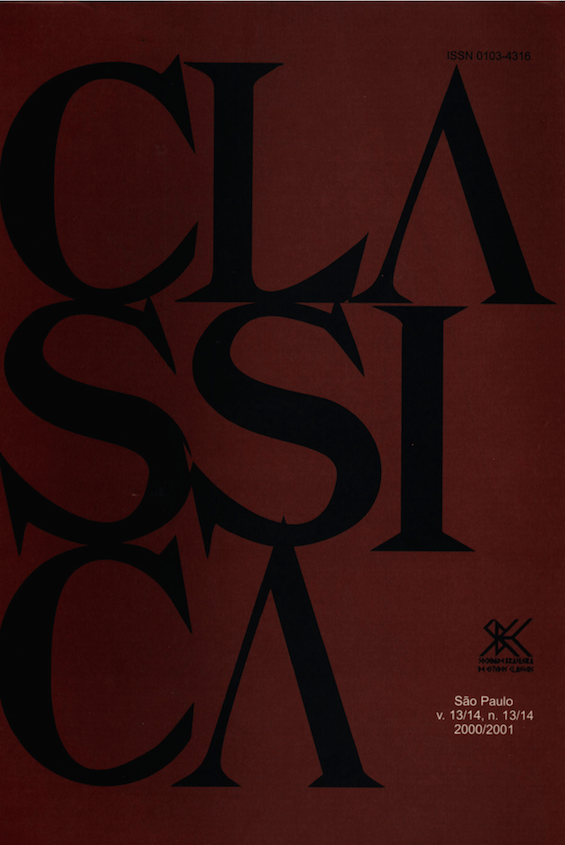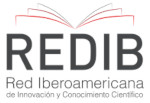El "Escudo de Heracles" de Hesíodo: écfrasis y narración en la épica arcaica
DOI:
https://doi.org/10.24277/classica.v13i13/14.442Palavras-chave:
Écfrasis, narrativa, Hesíodo, Homero, CatuloResumo
No "Escudo de Héracles" e no carmen 64 de Catulo (o "epitalâmio" de Peleu e Tetis), a écfrasis ocupa praticamente a metade do poema. Embora a de Catulo descreva como Teseu abandona Ariadne e consista, dessa forma, numa narrativa paralela à história principal, o escudo hesiódico não é uma narrativa propriamente dita e, sim, uma sequência de imagens distintas que existem simultaneamente, como em um desenho. Este artigo examina como a écfrasis hesiódica detém o movimento do tempo narrativo e apresenta uma comparação detalhada do "Escudo de Héracles" com a descrição do escudo de Aquiles na Ilíada. Embora ambas as écfrases suspendam o tempo narrativo, a de Hesíodo é mais fiel à simultaneidade das artes plásticas.
Downloads
Referências
BECKER, Andrew Sprague. The shield of Achilles and the poetics of ekphrasis. Lanham: Rowman and Littlefield, 1995.
CONNELLY, Jane Breton. "Narrative and image in Attic vase painting: Ajax and Kassandra at the Trojan Palladion". En HOLLIDAY, 1993, p. 88-129.
ELSNER, Jas, ed. Art and text in Roman culture. Cambridge: Carnbridge University Press, 1996.
ELSNER, Jas. (1996a). "Introduction". En ELSNER, 1996.
ELSNER, Jas. (1996b). "Inventing imperium: texts and the propaganda of monuments in Antiquity". En ELSNER, 1996, p. 32-53.
FOWLER, D.P. "Narrate and describe: the problem of ekphrasis". JRS, v.8 1, p. 25-35, 1991.
FOWLER, Don. "Even better than the real thing: a tale of two cities". En ELSNER, 1996, p. 57-74.
GOLDHILL, Simon; OSBORNE, Robin, edd. Art and text in ancient Greek Culture. Cambridge: Cambridge University Press, 1994.
HOLLIDAY, Peter J., ed. Narrative and eaent in ancient an. Cambridge: Cambridge University Press, 1993.
HORSFALL, Nicholas. "Dido in the light of History". En HARRISON, S. J., ed. Oxford readings in Vergil's Aeneid. Oxford: Clarendon Press, 1990 [orig. 1973-74], p. 127-40.
HUET, Valérie. "Stories one might te11 of Roman art: reading Trajan's Colurnn and the Tiberius cup". En ELSNER, 1996, p. 9-31.
KONSTAN, David. "Neoteric epic: Catullus 64". In BOYLE, A.J., ed. Critical essays on Roman literature: epic. London: Routledge, 1993. p. 59-78.
KRIEGER, Murray. Ekphrasis: the illusion of the natural sign. Baltimore: The Johns Hopkins University Press, 1992.
LAIRD, Andrew. "Ut figura poesis: Writing art and the art of writing in Augustan poetry". En ELSNER, 1996, p. 75-102.
LESSING, Gottfried E. Laocoön: on the limits of painting and poetry. Trad. E.A. McCormick. Baltimore: The Johns Hopkins University Press, 1984.
LISSARAGUE, Francois. "Epiktetos egraphsen: the writing on the cup". En GOLDHILL & OSBORNE, 1994, p. 12-27.
PERUTELLI, Alessandro. "L'inversione speculare: per una retorica dell'ekphrasis". MD, v. 1, p. 87-98, 1978.
PUTNAM, Michael C.J. Virgil's epic designs: ekphrasis in the Aeneid. New Haven: Yale University Press, 1998.
ROBERTS, Michael. The jeweled style: poetry and poetics in late Antiquity. Ithaca: Comell University Press, 1989.
SHARROCK, Alison. "Representing metamorphosis". En ELSNER, 1996, p. 103-30.
SNODGRASS, Anthony M. Narrative and allusion in archaic Greek art. London: Leopard's Head, 1982.
SPIVEY, Nigel. Understanding Greek sculpture: ancient meanings, modem readings. London: Thames and Hudson, 1996.
Downloads
Publicado
Edição
Seção
Licença
Autores que publicam nesta revista concordam com os seguintes termos:
a. Autores mantém os direitos autorais e concedem à revista o direito de primeira publicação, com o trabalho simultaneamente licenciado sob a Creative Commons Atribuição 4.0 Internacional (CC BY 4.0) que permite o compartilhamento do trabalho com reconhecimento da autoria e publicação inicial nesta revista.
b. Autores têm autorização para assumir contratos adicionais separadamente, para distribuição não-exclusiva da versão do trabalho publicada nesta revista (ex.: publicar em repositório institucional ou como capítulo de livro), com reconhecimento de autoria e publicação inicial nesta revista.
c. Autores têm permissão e são estimulados a publicar e distribuir seu trabalho online após o processo editorial (ex.: em repositórios institucionais ou na sua página pessoal), já que isso pode gerar alterações produtivas, bem como aumentar o impacto e a citação do trabalho publicado (Veja O Efeito do Acesso Livre).
d. Autores autorizam a cessão, após a publicação, de seu conteúdo para reprodução em indexadores de conteúdo, bibliotecas virtuais, bases de dados de acesso público e similares.











